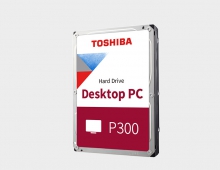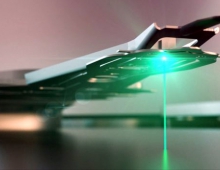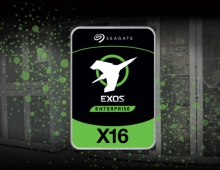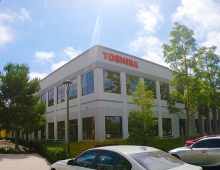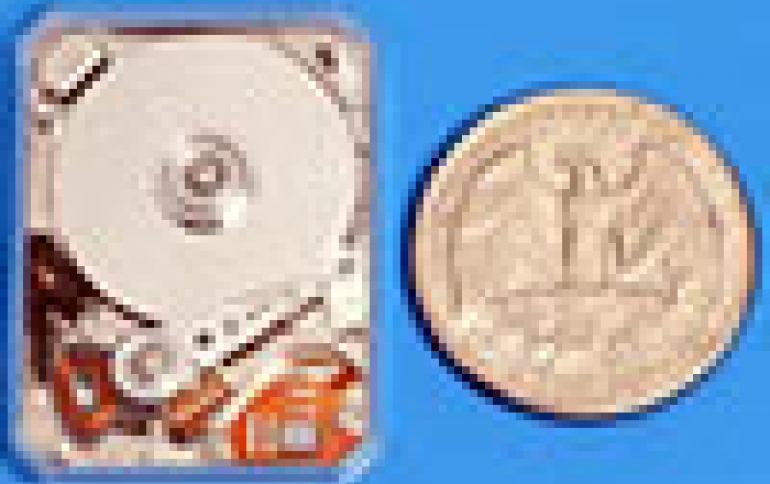
Japanese Researchers: 138G bits per square inch For Hard Drives
Japanese Tohoku University researchers has shown a prototype 1-inch hard disk drive that packs data on the disk surface more densely than existing hard drives.
The density with which information can be packed onto the disk is particularly
important in the tiny hard drives used in handheld electronic devices such as digital
music players.
The prototype 10G-byte drive packs data with an areal density -- the number of bits per unit of disk surface area -- of 138G bits per square inch, said Yoshihisa Nakamura, who heads the project at Tohoku University's Research Institute of Electrical Communications. His laboratory developed the prototype drive as part of a project to increase the storage capacity of handheld electronics devices.
The prototype drive uses perpendicular recording technology to achieve its higher areal density, Nakamura said. The technology works by standing the magnetic fields that represent data bits upright. In commercially available drives, those fields lay flat on the surface of the disk. Standing these fields upright means they take up less space, enabling more data to be crammed on the disk.
"For one-inch drives, 138G-bit areal density is a world record. Somebody may have a higher density in a lab somewhere, but they haven't shown them," Nakamura said.
Many of the world's leading drive vendors have announced they plan to sell drives using perpendicular technology. Of these companies, Japan's Hitachi Global Storage Technologies. (HGST), Fujitsu and Toshiba worked with Nakamura to develop the prototype, he said.
HGST is considering commercializing the drive, although the company has not said when, he said.
Nakamura said his lab should be able to boost the areal density of 1-inch disks to about 500G bits per square inch in 2007. This could enable 1-inch drives to have capacities as high as 30G bytes a few years from now, he said. Currently, the highest-capacity 1-inch drives on sale store a maximum of 6G bytes of data.
Tohoku University researchers aren't the only ones looking to perpendicular recording as a way to boost areal density. Last month, Japanese public broadcaster Nippon Hoso Kyokai (NHK) showed a prototype 10G-byte 1-inch hard drive that also employed the technology.
That drive, which was developed by NHK and Sony, has an areal density of 120G bits per square inch, according to Eiichi Miyashita, senior research engineer at NHK's Science and Technical Research Laboratories. There are no plans to commercialize this drive yet, he said.
Toshiba and Matsushita Kotobuki Electronics are also working on drives with 0.8-inch or 0.7-inch diameter platters. That's half the size of the 1.8-inch drive used in Apple's iPod portable music player. The new drives will be used in MP3 players, digital camcorders handheld digital video players and other portable consumer electronics and even some cellular telephones.
The prototype 10G-byte drive packs data with an areal density -- the number of bits per unit of disk surface area -- of 138G bits per square inch, said Yoshihisa Nakamura, who heads the project at Tohoku University's Research Institute of Electrical Communications. His laboratory developed the prototype drive as part of a project to increase the storage capacity of handheld electronics devices.
The prototype drive uses perpendicular recording technology to achieve its higher areal density, Nakamura said. The technology works by standing the magnetic fields that represent data bits upright. In commercially available drives, those fields lay flat on the surface of the disk. Standing these fields upright means they take up less space, enabling more data to be crammed on the disk.
"For one-inch drives, 138G-bit areal density is a world record. Somebody may have a higher density in a lab somewhere, but they haven't shown them," Nakamura said.
Many of the world's leading drive vendors have announced they plan to sell drives using perpendicular technology. Of these companies, Japan's Hitachi Global Storage Technologies. (HGST), Fujitsu and Toshiba worked with Nakamura to develop the prototype, he said.
HGST is considering commercializing the drive, although the company has not said when, he said.
Nakamura said his lab should be able to boost the areal density of 1-inch disks to about 500G bits per square inch in 2007. This could enable 1-inch drives to have capacities as high as 30G bytes a few years from now, he said. Currently, the highest-capacity 1-inch drives on sale store a maximum of 6G bytes of data.
Tohoku University researchers aren't the only ones looking to perpendicular recording as a way to boost areal density. Last month, Japanese public broadcaster Nippon Hoso Kyokai (NHK) showed a prototype 10G-byte 1-inch hard drive that also employed the technology.
That drive, which was developed by NHK and Sony, has an areal density of 120G bits per square inch, according to Eiichi Miyashita, senior research engineer at NHK's Science and Technical Research Laboratories. There are no plans to commercialize this drive yet, he said.
Toshiba and Matsushita Kotobuki Electronics are also working on drives with 0.8-inch or 0.7-inch diameter platters. That's half the size of the 1.8-inch drive used in Apple's iPod portable music player. The new drives will be used in MP3 players, digital camcorders handheld digital video players and other portable consumer electronics and even some cellular telephones.

